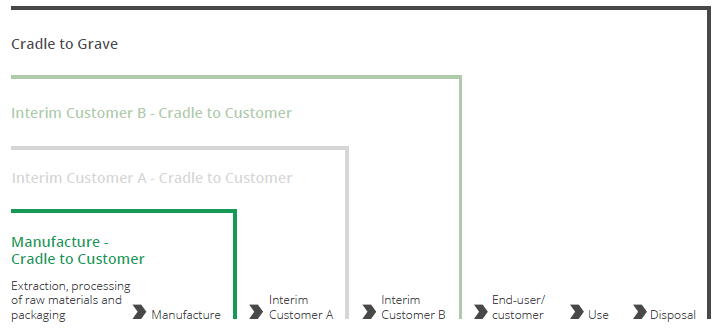Figure 6 sets out the different boundaries for various life-cycle stages within an illustrative product supply chain.
The Greenhouse Gas Protocol Corporate Standard gives a clear list of the different emission sources, but does not give clarity about where the responsibility of companies begins and ends. Understanding responsibilities for Scope 1 and Scope 2 is relatively straightforward. A utility’s Scope 1 is a power user’s Scope 2, and those corporates taking climate action take responsibility for the power they use. Scope 3, however, is entirely different, and it can be a case of unpicking multiple responsibilities from a long value chain of many different actors, materials and activities. Things get particularly difficult for products that are a component part of a product or an intermediary product, and for products where consumer behavior greatly affects the emissions during the use and disposal phases. Central to this topic is the question of whether companies should be responsible for cradle-to-customer or cradle-to-grave emissions. Cradle-to-grave includes the emissions from use and disposal phases, whereas cradle-to-customer does not.
For CarbonNeutral® product certification, the boundary for required emissions sources is cradle-to-grave emissions, with one exception: products using an Environmental Product Declaration (EPD) to document its footprint, where the Product Category Rules underpinning the EPD only require emissions from fewer life cycle stages, e.g. cradle to customer.
Only in such an instance can CarbonNeutral® product certification be achieved with fewer life cycle stages. More information on EPDs is set out in Technical Specification 2.9 (Using EPDs for CarbonNeutral® products). All other products measuring less than cradle-to-grave emissions cannot use CarbonNeutral® product certification, but may use CarbonNeutral® product (excluding...) certification.
The logic behind the Protocol’s standardization of CarbonNeutral product certification around cradle-to-grave emissions is to ensure the integrity of the communications around CarbonNeutral products to customers and/or consumers. For some products, certain emissions, for example those in the use or disposal phase, can be avoided by individual consumers’ behaviors, and are therefore not intrinsic to the product. This can lead some to think that these use or disposal phase emissions need not be accounted for when undertaking a footprint of a product. However, the standardization of CarbonNeutral product certification around cradle-to-grave emissions effectively says that the footprint must be calculated from the best available evidence of what, on aggregate, actual consumer behavior is when using or disposing of the product, not on the basis of one low- or zero-emissions option available to the consumer. Where PCRs underpinning the EPD require emissions from fewer life cycle stages, e.g. cradle-to-customer, we defer to those rules and deem them to have assessed that the stages not included are not material to the footprint for the specified type of product.
In summary, CarbonNeutral product certification is available for those entities able to take climate action on all the emissions associated with the product, and CarbonNeutral product (excluding...) certification gives an option to entities that can only take climate action on the emissions associated with the creation and manufacture of the product but not (yet) the emissions of the use and disposal of the product. In a world where only a minority of companies are carbon neutral today and there is a need to ensure wider adoption, and where maintaining clear and credible claims to consumers is a must, we deem that this approach helps navigate the complexity of product value chains with a simple, pragmatic and flexible approach.
We anticipate that the scope of product certifications will be refined with time and application, and this guidance will be updated in subsequent revisions to the Protocol.
Figure 6: Boundaries for Life-Cycle Stages Within a Product Supply Chain
